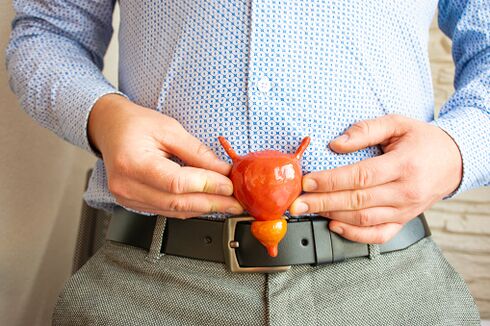Characteristic of the disease of men, which is accompanied by a disorder of the functions of the urinary system and contributes to the development of certain irreversible pathologies, is prostatitis. The disease is an inflammation of the prostate.

As symptoms of the disease, it is worth noting:
- pain in almost every part of the hip area (perineum, anus, groin, scrotum, etc. ).
- urination becomes more frequent, accompanied by pain.
- body temperature rises and the temperature in the anus is significantly higher than the temperature in the armpit.
- joint and muscle pain of varying severity may be observed.
- periodically there are severe headaches and general weakness of the body occurs.
Why does prostatitis occur?
The causes of the pathology are divided into infectious and non-infectious. Obviously, in the first case, the cause of the disease is the activity of microorganisms that enter the man's body from the outside.
Among the non-infectious reasons, it is worth noting a weakened immune system, hypothermia, low physical activity, prolonged sexual abstinence, overactive sex life, alcoholism.
Infectious causes of prostatitis can be divided into about two types. The first type of infectious causes must include sexually transmitted infections from an infected partner and the second type includes existing infectious diseases in the body of men against which prostatitis develops (chronic tonsillitis, sinusitis, kidney disease).
Types of prostatitis
Due to certain factors and criteria, prostatitis is divided into acute, chronic, chronic bacterial and asymptomatic. The disease is often accompanied by urethritis or blistering. The occurrence of acute prostatitis can be based on the pathogenic action of a huge number of microorganisms (E. coli, Klebsiela, Proteus, Pseudomonas aeruginosa, Enterobacter, Staphylococcus aureus, etc. ). Many microorganisms are an integral part of the healthy microflora of the skin or intestinal tissues, however, when they enter the prostate tissues, they cause a rapidly growing inflammatory process. Due to the severe clinical symptoms, the diagnosis of an acute form of pathology is a relatively simple measure. As a rule, blood and urine tests are sufficient, but for maximum information, a bacteriological smear, placement ultrasound, computed tomography or magnetic resonance imaging may be obtained.
The development of a chronic bacterial form of prostatitis occurs as a result of the pathogenic activity of pathogenic microorganisms that have entered the prostate tissues. Among the methods for diagnosing this form of the disease, it is worth emphasizing uroflometry, microscopy of prostate secretion and urography of the research.
Treatment of prostatitis
The treatment of prostatitis is based on the use of antibiotics, which differ in their aggressiveness depending on the development and course of the pathology. The prescription of drugs is individual in each case, it depends on both the form of the disease and the characteristics of the organism. The prescription of drugs and their dosage are determined by the treating urologist, based on the results of diagnostic studies. In some forms of prostatitis, combination therapy is used, that is, the use of several antibiotics at the same time, in this regard, drugs are prescribed to neutralize their side effects (probiotics). It is possible to use immunostimulants to enhance the functional capacity of the immune system and vitamin complexes. In some cases, prostate massage is prescribed. The treatment of the disease must be approached very, very seriously, at least because of the possible development of malignant neoplasms during the development of prostatitis. Prostate cancer is not just a dangerous disease, but often life threatening. Under no circumstances should you skip treatment and when the first signs of the disease appear, contact your urologist. Treatment in the early stages of prostatitis will allow you to get rid of the disease forever.





























